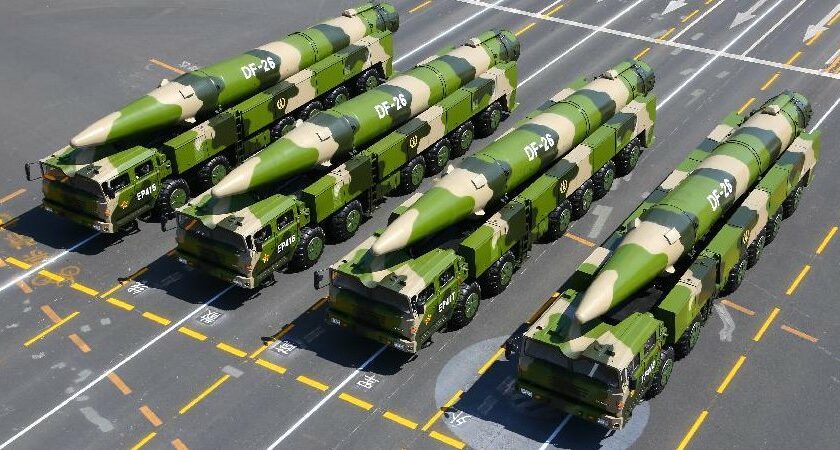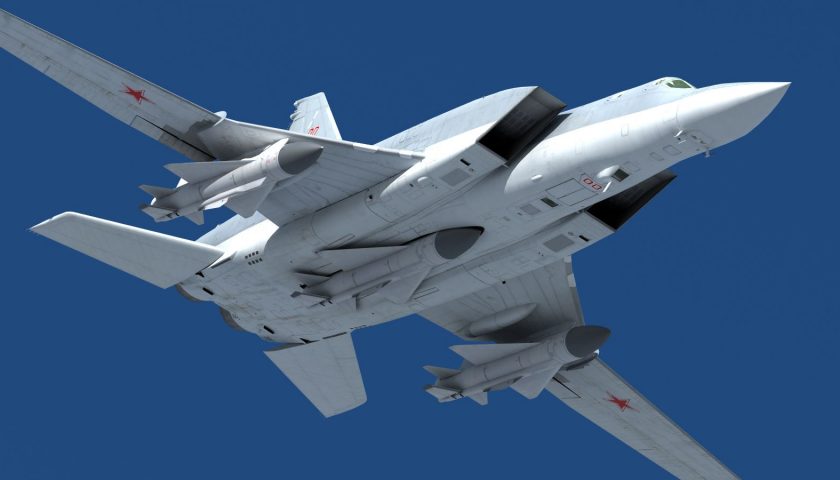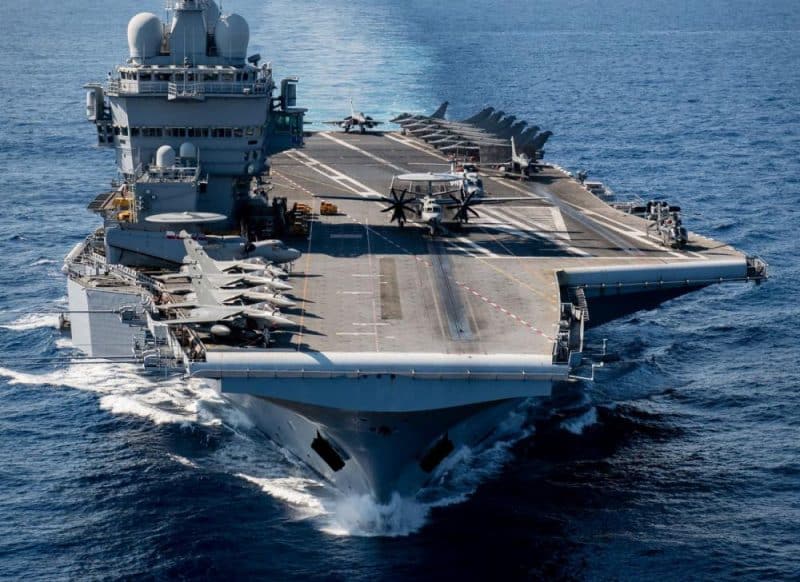Since the announcement of launch of the French New Generation Aircraft Carrier program by the President of the Republic, many voices were raised to question the relevance of such an investment, in particular in the face of the threat posed now by anti-ship missiles hypersonic at long range, like the 3M22 Tzirkon Russian, or DF26 Chinese. According to them, and according to others especially in the United States, such mastodons of the seas are easily located, and therefore constitute the targets of choice for new enemy anti-ship missiles. However, a factual and objective analysis of the capabilities offered by aircraft carriers, as well as of the reality of the actual threat, could offer a very different reading of the situation.
The threat of long-range hypersonic missiles
A missile is said to be hypersonic when its speed exceeds the Mach 5 threshold, causing, among other things, various phenomena such as the creation of a plasma on the contact faces of the missile. Above all, no anti-missile system can, today, be effective in intercepting such a missile. Several programs have been launched around the world to have such missiles, both in the field of land target strikes and ship strikes, and in particular large units, such as aircraft carriers. China has thus had two ballistic missiles for several years presented to have certain anti-ship capabilities, the DF21D with a range of 1500 km, and the DF26 with a range of 4000 km. The semi-ballistic trajectory of the missile suggests that the re-entered vehicle is indeed maintaining hypersonic speed. A new missiles, airborne this time, and derived from DF17 so-ground missile, has been observed this year in China. Equipped with a hypersonic glider, it could be a new anti-ship missile.

Russia for its part has so far developed two hypersonic tactical missiles. the Kh47M2 Kinzhal is launched by a Mig31 or a Tu22M3M, and could hit targets 2000 km away at hypersonic speed in a semi-ballistic trajectory. It is presented as potentially capable of being used as an anti-ship weapon, even if, like the DF21D and DF26, it is a missile without a seeker, and therefore obviously directed by spatial registration. the 3M22 Tzirkon missile, when to him, is a sea-sea missile launched from UKSK vertical silos, and capable of reaching targets 1000 km away at a speed of Mach 7. Its guidance system is currently unknown, but given its context of tactical use, one can imagine that he indeed has a seeker to detect and strike his target.
The United States, but also France, India, and Japan, are also developing their own hypersonic anti-ship missile programs, although none of the projects is yet sufficiently advanced to know their performance. . However, it is likely that these systems, scheduled to enter service between 5 and 15 years from now, will carry their own detection and discernment capabilities, like modern anti-ship missiles. Finally, note that there are already several supersonic missiles in service in some navies, such as the P-800 Onyx Russian and the Indian Brahmos. Without being supersonic, these missiles are already fast enough to pose significant problems to the anti-aircraft and anti-missile systems protecting aircraft carriers.
A little historical reminder
Presented in this way, we can effectively conclude that the future of the aircraft carrier is at least threatened. How to explain, in this case, that all the major Navies of the World are making significant efforts to quickly equip themselves with such ships, and that in 2035, more aircraft carriers will sail the seas than ever before? sailed since the end of the Second World War? To answer these questions, it is necessary to take a step back.

Because indeed, this is not the first time that the imminent end of the aircraft carrier has been announced. Thus, at the end of the Second World War, many senior officers at the Pentagon, but also within the European armies, believed that the aircraft carrier no longer had a role to play, with the arrival of nuclear weapons. . The Korean War and the strategic landing at Inchon showed the American military that nuclear weapons were not the solution to all crises, and that the aircraft carrier remained an indispensable tool for controlling the oceans, and for protecting the amphibious actions. The role of aircraft carriers in the conflicts of the 50s and 60s only increased this certainty.
It was then that Russia began to equip itself with long-range bombers armed with heavy long-range anti-ship missiles. Miasishchev M-4 Bison were then replaced by Tu-16 Badger and Tu-22 Blinder, capable of carrying anti-ship missiles like the Kh22 with a range of 600 km and a dive terminal speed greater than Mach 4. The situation became even more difficult with the entry into service of the first Tu-22M Backfire, a supersonic heavy bomber capable of carrying 2500 Kh1,9 missiles at 3 km and at Mach 22. Again, many voices were raised to emphasize the obsolescence and apparent vulnerability of the aircraft carrier, especially in the West. And there again, the aircraft carrier imposes itself as the solution to counter this threat, through the association of the new F14 Tomcat fighter carrying up to 6 long-range air-to-air missiles AIM54 Pheonix designed to intercept Russian bombers and possibly the missiles launched against the fleet, and the AEGIS system associated with the SPY-1 radar and SM2 missile which will become the backbone of the anti-aircraft protection of the aircraft carriers provided by the Ticonderoga cruisers, soon to be reinforced by the Arleigh Burke destroyers.

As for the aircraft carrier, it proved to be the essential tool for managing all crises in the world, from the beginning of the 70s to today, whether it be the Iranian, Iraqi or Lebanese crisis, of the Falklands war, of the tensions with North Korea, of the intervention in the Yugoslav wars, of the Syrian and Libyan crises, and even of the intervention in Afghanistan.
The Spear and the Shield

The rest of this article is for subscribers only
The Classic subscriptions provide access to
all articles without advertising, starting at € 1,99.
Newsletter subscription
Register for the Meta-Defense Newsletter to receive the
latest fashion articles daily or weekly

